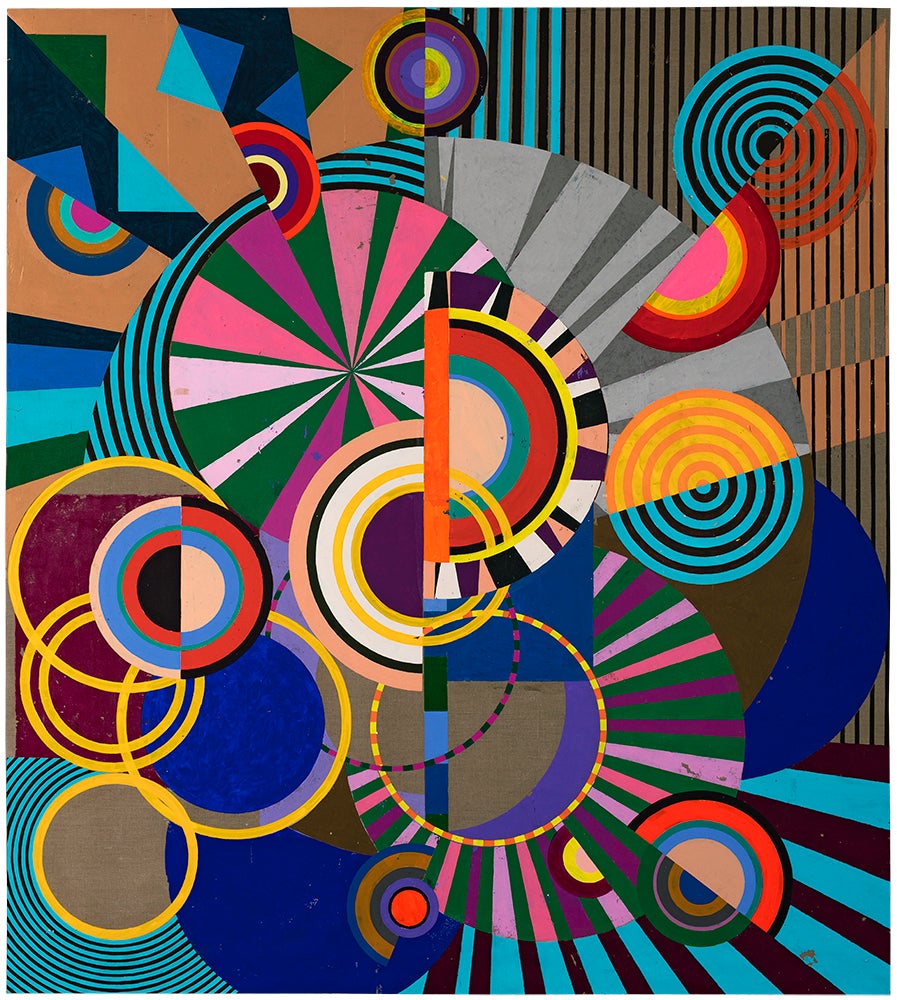Rio Azul, Beatriz Milhazes, White Cube Bermondsey, London, review: Visually seductive, slightly vertigo-inducing
The Brazilian artist's first London show in a decade brings together a selection of paintings, collage, sculpture, and a giant tapestry

The work of Brazilian painter and collage artist Beatriz Milhazes treads a fine line between the cerebral (and occasionally even visually austere) impulses of modernism, and the untutored, celebratory, colour-saturated excess of folk art as it spills in the direction of carnival.
This new show, the first in London for a decade, brings together paintings, collage, sculpture, and a giant tapestry, 16m across, made at the Aubusson factory in France.
Every painting in this show, Milhazes has said, as her eyes wheeled around the gallery in a slightly intoxicated state of self-bewilderment, is a unique result of a mathematical dream. Was that paradoxical statement the nonsense that it seems to be? Not exactly, not in her case.
It claims two things, simultaneously: that art of any significance is both a letting go and a call to order, a rational calculation and an aleatory flight of fancy. The collages here feel exactly like that. They work on the pulses. This is conceptual art created in a spirit of celebration. It’s foot-tapping stuff, all dolled up to be visually seductive, restlessly provocative and slightly vertigo-inducing.
Take the collages in the first gallery, for example. Are these flat surfaces yearning to be intricate machines of a kind? They look like waking mechanisms: wheel-spinnings, discs, waves of colour, forever on the go. They also change and change again in their detailing, from checked to marbled. They look to be striving to achieve the resolution of a fine, rhythmical balance.
The paintings in the second gallery are much larger, much more studiedly laboured in their surface layerings. Elements are in restless contention, pushing to gain ascendancy. There are circles within circles, frenzied and with shades of Op Art, the 1960s movement that made use of optical illusions.
The tapestry on the back wall has, by contrast, an unusually crisp simplicity, a sigh of completion – the palmetto shapes are pure Matisse. There are sea-like undulations, handsome black curlicues, ghostly built shapes, graciously sculpted leaf forms. The whole looks like a sequence of screens, perpetually shifting or sliding across each other. I mentioned Matisse – but the colours here have a tropical richness, a fierce, sun-struck density that he never achieved.
Until 1 July (whitecube.com)
Subscribe to Independent Premium to bookmark this article
Want to bookmark your favourite articles and stories to read or reference later? Start your Independent Premium subscription today.

Join our commenting forum
Join thought-provoking conversations, follow other Independent readers and see their replies